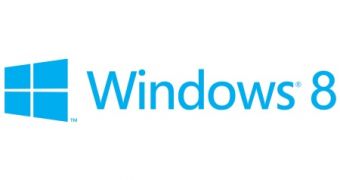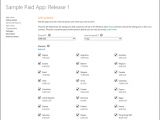Windows 8, Microsoft’s next-generation operating system, will arrive on shelves on October 26th, accompanied by its own application portal, offering users the possibility to download and install Metro-style software on their computers.
This feature is new to Windows, but Microsoft has offered both developers and users the possibility to get a taste of it tby making the Windows Store accessible ever since the Windows 8 Consumer Preview flavor landed.
However, only free applications are currently available in the Store, though paid ones are meant to arrive in the coming weeks.
To be more precise, Microsoft plans on allowing developers to submit paid apps to the Store as soon as Windows 8 reaches the RTM milestone the first week of August.
In a recent post on the Windows Store blog, Arik Cohen, lead program anager for Microsoft’s Commerce and Licensing team, explains that developers will be in control of the price tag of their applications.
“When you onboard your app, you set its price (and the price of any in-app offers that your app provides) by selecting a price tier. Price tiers range from $1.49 to $999.99; you can see the entire list of price tiers on the Dev Center,” he explains.
Price tiers will be based on the currency the Windows Store supports in the country where the developer signed up from, though they will be equivalent in all markets.
“Price tiers ensure that an equivalent price is selected for selling your app in any currency supported by the Store. The local pricing is derived by foreign exchange rates and rounded to provide the appropriate precision for the standards of a given currency,” Cohen explains.
Devs submitting paid apps will have to provide tax information (appropriate Internal Revenue Service tax forms will be there to fill up) and info on the bank account where the proceeds will be deposited.
Microsoft will process all payments on a monthly basis for all eligible transactions. The company also explains that transactions will become eligible for payment only 30 days after the purchase was made.
Moreover, developers need to know that payments are delivered only when $200 or equivalent in app sales was accumulated.
“Remember that app sales represent the total amount sold, while app proceeds represent the amount sold minus the Store fee,” Cohen notes.
“Store fees are calculated on a per-transaction basis as well. These fees are based at 30% of the app price, until your app reaches $25,000 or equivalent of lifetime sales (aggregated across app sales and in-app purchases) when they change to 20% of the app price.”
Section 5 of the App Developer Agreement available on the Dev Center provides additional details on how terms for payments reward great apps.
The above apply to all transactions made through Microsoft’s platform. However, developers will be able to choose other means to monetize their applications as well.
Among these, we can count trials with easy conversion to the full paid version of the app, in-app purchases to allow monetization over time, advertising within apps, billing through devs’ existing mechanisms.
Moreover, app builders will be offered the possibility to test the various commerce states, so as to make sure that users do have access to the “Purchase Full Version” button in software when the trial version is running.
Additional info on the matter, as well as on the pricing options, the flexible monetization opportunities and the like can be found in the aforementioned blog post.
“With more than 630 million licenses sold to date, across 200+ countries and regions around the world, Windows has an unrivaled global reach. Combined with the flexibility of monetization options that the Store provides, Windows 8 represents the single biggest developer opportunity for any platform,” Cohen concluded.

 14 DAY TRIAL //
14 DAY TRIAL // 
